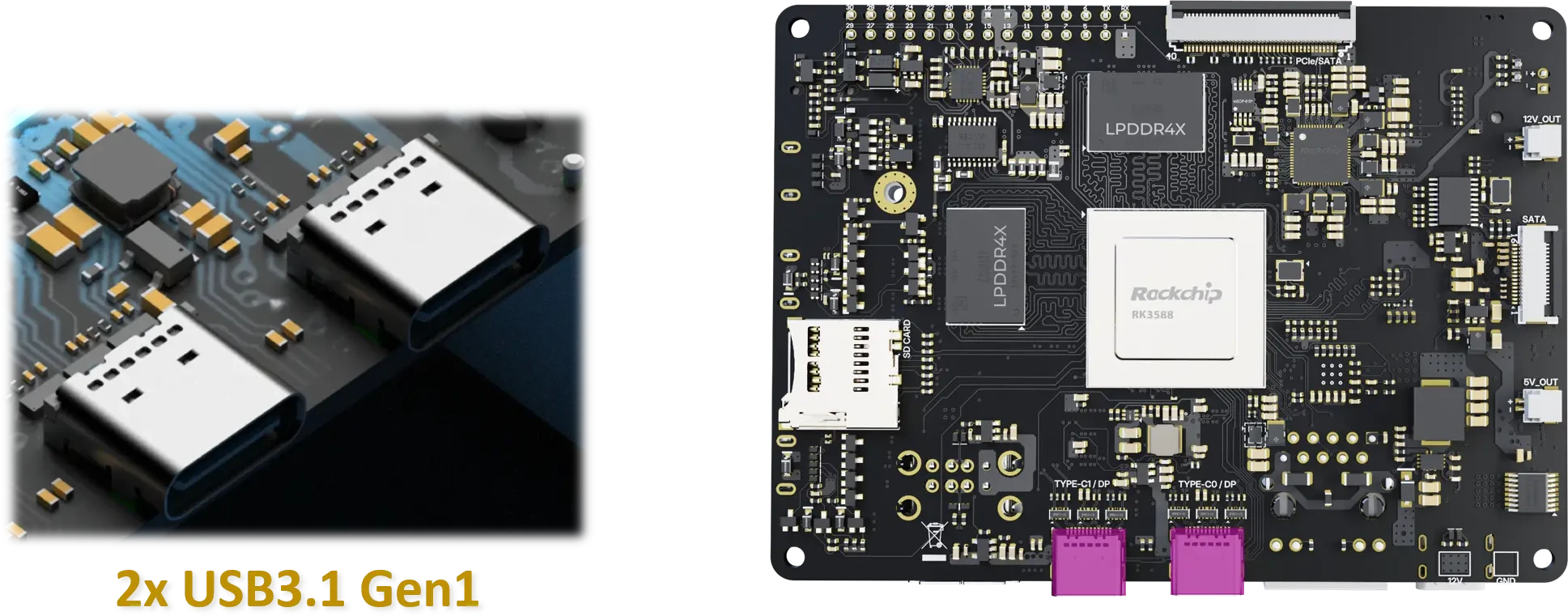USB 3.1 Gen1
Axon board includes two USB Type-C ports, each supporting USB 3.1 Gen 1 (5 Gbps) and DisplayPort output. This guide explains how to use and inspect Type-C USB 3.1 Gen1 interfaces on a Linux system.

Basic Utilities and Commands
List Connected USB Devices
Use lsusb to displays information about USB buses and the devices connected to them.
vicharak@vicharak:~$ lsusb -t
/: Bus 007.Port 001: Dev 001, Class=root_hub, Driver=xhci-hcd/1p, 480M
/: Bus 008.Port 001: Dev 001, Class=root_hub, Driver=xhci-hcd/1p, 5000M
|__ Port 001: Dev 002, If 0, Class=Mass Storage, Driver=uas, 5000M
What it shows:
USB Bus number (Bus 007, 008)
Device number (Device 001)
Vendor ID and Product ID (0bda:8153)
Manufacturer and device name
To get verbose information:
lsusb -v
To filter by a specific device ID:
lsusb -d <vendor>:<product>
Note
Also See: USB Device Speed and Topology.
Host/Device Mode detection
USB DRD (Dual-Role Device)
USB controller’s base address |
Description |
|---|---|
|
Type-C0 |
|
Type-C1 |
Go into root user by running su command. Default root password is root.
cat /sys/kernel/debug/usb/fc000000.usb/mode
It gives you on which mode usb port act as.
If user has connected pendrive to Axon on Type-C0 Port, it acts as
hostmode.If user has connected Axon to Host pc on Type-C0 Port, it acts as
devicemode.
USB Command Reference
This section lists common Linux commands used to interact with USB devices.
Command |
Description |
|---|---|
|
List USB devices |
|
Detailed USB device info |
|
Kernel logs and hotplug info |
|
Mount USB storage device |
Note
- Speed values:
1.5 Mbps - USB 1.1 (Low Speed)
12 Mbps - USB 1.1 (Full Speed)
480 Mbps - USB 2.0 (High Speed)
5000 Mbps - USB 3.0 / USB 3.1 Gen1 (SuperSpeed)